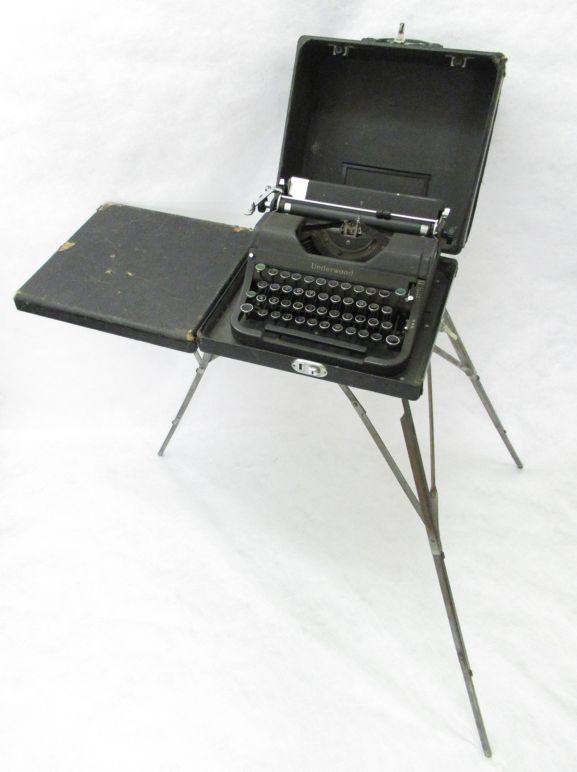To run a successful military unit requires a lot of administration. Combat reports, equipment requisitions, citations, intelligence reports, communications, orders and a myriad of other documents must be typed up and dispatched. Having precise information on a situation can mean the difference between success and failure. In the harsh conditions of war this can be exceedingly difficult, especially near the front lines, where situations can change rapidly.
In the age where the mechanical typewriter ruled, moving the necessary equipment to facilitate clear communication was challenging, and heavy work. Most typewriters where weighty, bulky items that weren’t designed for ease of transport like our laptops and tablets. So, how do you provide an accessible and easy to move typewriter for the author on the move? Give it a pair of legs of course!

This Underwood Universal Portable typewriter was produced in the 1930s. It is more compact than some of its contemporaries and weighs only 9.5kg, including the carry case. While this might be considered heavy by our standards – the laptop I am currently typing on weighs only 2.7kg – it was a significant difference compared to other typewriters of the time. The most interesting feature of this typewriter is in the accompanying carry case. Folded into a small compartment in its base, reside a set of legs. Once unfolded they provide a mobile work platform for the typewriter with a small table top to the side. This comparatively lightweight typewriter with its mobile work platform was a very popular model. American authors William Faulkner and Ernest Hemmingway both used Underwood Universal Portable typewriters.

This typewriter belonged to Flying Officer William (Bill) Williamson, an RNZAF Administrative and Special Duties officer. Bill completed his training in January 1943 and was posted in the Pacific. When he transferred from the Ondonga airfield in the Solomon Islands to Bougainville in May 1944, there was little time to pack and much of his administrative equipment was left behind. Bill purchased this typewriter from an American serviceman upon his arrival to replace the one he had left behind, and he used it for the remainder of his service and beyond.
Bill served as the Adjutant of No. 2 Servicing Unit and Officer Commanding RNZAF Fire Services at Torokina airfield in 1944. On the night of 12 August 1944, the airfield came under heavy attack from enemy artillery. Bill risked his own safety in combating the ensuing fires that where threatening the highly explosive fuel dump. He continued to battle the flames through continuous enemy shelling, managing to contain the fires and save much of the precious fuel. On 24 August he was awarded a United States Commendation for his outstanding service and bravery.
On his return to New Zealand, Bill became a Presbyterian minister based in Mosgiel. For the next 50 years he continued to use his ‘Bougainville Typewriter’, as he referred to it, to type his sermons and other church business.





